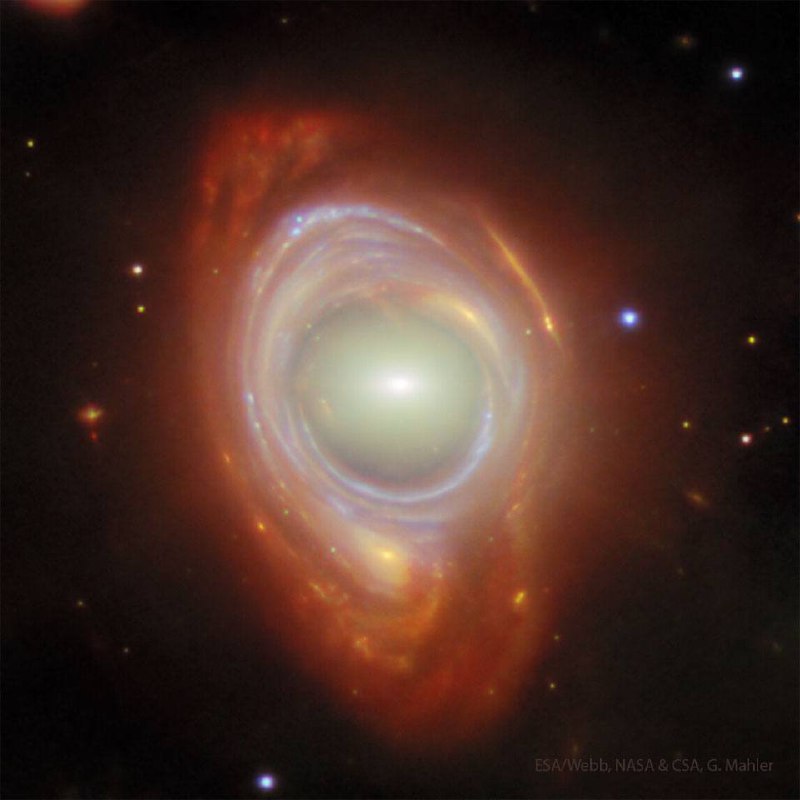Disclaimer: All content on this site is provided in good faith and for informational purposes only. Unless explicitly stated and sourced, all information should be considered alleged and unverified. We quote third parties and include archival material for informational and educational purposes, and do not endorse defamatory or harmful statements. For full details, visit our Disclaimer page.
**Galaxy Lenses Galaxy from Webb **
2025-04-21
165 words
1 min read

**Galaxy Lenses Galaxy from Webb ** **Image Credit: **ESA/Webb, NASA & CSA, G. Mahler **Explanation: **Is this one galaxy or two? Although it looks like one, the answer is two. One path to this happening is when a small galaxy collides with a larger galaxy and ends up in the center. But in the featured image, something more rare is going on. Here, the central light-colored elliptical galaxy is much closer than the blue and red-colored spiral galaxy that surrounds it. This can happen when near and far galaxies are exactly aligned, causing the gravity of the near galaxy to pull the light from the far galaxy around it in an effect called gravitational lensing. The featured galaxy double was taken by the Webb Space Telescope and shows a complete Einstein ring, with great detail visible for both galaxies. Galaxy lenses like this can reveal new information about the mass distribution of the foreground lens and the light distribution of the background source.
Source:
This article includes information sourced from third parties. Where sources are unavailable, such as broken or missing links, we were unable to directly verify the claims. Readers are encouraged to evaluate the information critically and seek additional verification where necessary.

Authored By TMB LLC
Our Mission is to bridge the gap between mainstream and independent news while offering transparent, honest, and reliable information.